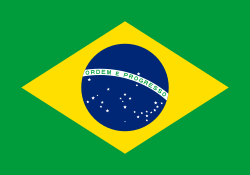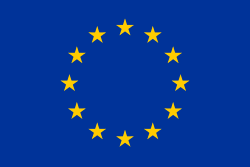San Marinos Grand Prix 1998
| Datum | 26 april 1998 |
|---|---|
| Bana | Autodromo Enzo e Dino Ferrari |
| Sträcka | 62 × 4,930 = 305,660 km |
| Vinnare | David Coulthard, McLaren-Mercedes |
| Pole position | David Coulthard, McLaren-Mercedes |
| Snabbaste varv | Michael Schumacher, Ferrari, 1:29,345 |
San Marinos Grand Prix 1998 var det fjärde av 16 lopp ingående i formel 1-VM 1998.
Rapport
David Coulthard i McLaren hade pole position och dominerade tävlingen medan hans stallkanrat Mika Häkkinen tvingades bryta. Michael Schumacher i Ferrari kom nästan ikapp Coulthard på slutet, men denne höll undan. Eddie Irvine, också han i Ferrari, slutade på tredje plats. Detta var Coulthards enda seger under säsongen.
Resultat
- David Coulthard, McLaren-Mercedes, 10 poäng
- Michael Schumacher, Ferrari, 6
- Eddie Irvine, Ferrari, 4
- Jacques Villeneuve, Williams-Mecachrome, 3
- Heinz-Harald Frentzen, Williams-Mecachrome, 2
- Jean Alesi, Sauber-Petronas, 1
- Ralf Schumacher, Jordan-Mugen Honda
- Esteban Tuero, Minardi-Ford
- Mika Salo, Arrows
- Damon Hill, Jordan-Mugen Honda (varv 57, hydraulik)
- Olivier Panis, Prost-Peugeot
Förare som bröt loppet
- Ricardo Rosset, Tyrrell-Ford (varv 48, motor)
- Toranosuke Takagi, Tyrrell-Ford (40, motor)
- Jarno Trulli, Prost-Peugeot (34, gasspjäll)
- Shinji Nakano, Minardi-Ford (27, motor)
- Pedro Diniz, Arrows (18, motor)
- Mika Häkkinen, McLaren-Mercedes (17, växellåda)
- Giancarlo Fisichella, Benetton-Playlife (17, snurrade av)
- Alexander Wurz, Benetton-Playlife (17, motor)
- Johnny Herbert, Sauber-Petronas (12, punktering)
- Jan Magnussen, Stewart-Ford (8, transmission)
- Rubens Barrichello, Stewart-Ford (0, snurrade av)
VM-ställning
Förarmästerskapet | Konstruktörsmästerskapet
|
| ||||||||
Media som används på denna webbplats
The civil ensign and flag of Belgium. It is identical to Image:Flag of Belgium.svg except that it has a 2:3 ratio, instead of 13:15.
The Flag of Europe is the flag and emblem of the European Union (EU) and Council of Europe (CoE). It consists of a circle of 12 golden (yellow) stars on a blue background. It was created in 1955 by the CoE and adopted by the EU, then the European Communities, in the 1980s.
The CoE and EU are distinct in membership and nature. The CoE is a 47-member international organisation dealing with human rights and rule of law, while the EU is a quasi-federal union of 27 states focused on economic integration and political cooperation. Today, the flag is mostly associated with the latter.
It was the intention of the CoE that the flag should come to represent Europe as a whole, and since its adoption the membership of the CoE covers nearly the entire continent. This is why the EU adopted the same flag. The flag has been used to represent Europe in sporting events and as a pro-democracy banner outside the Union.
















